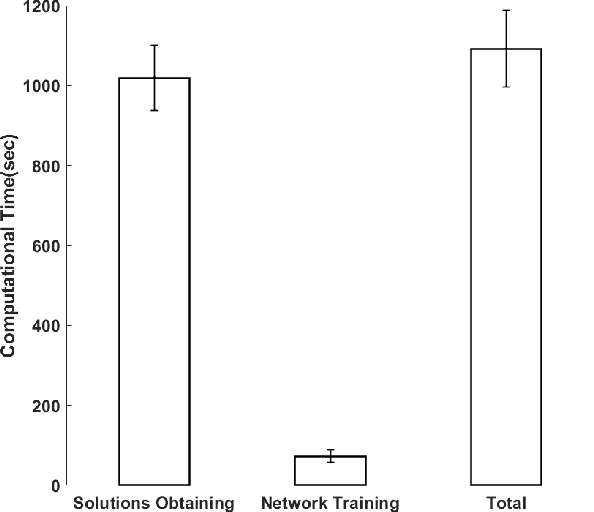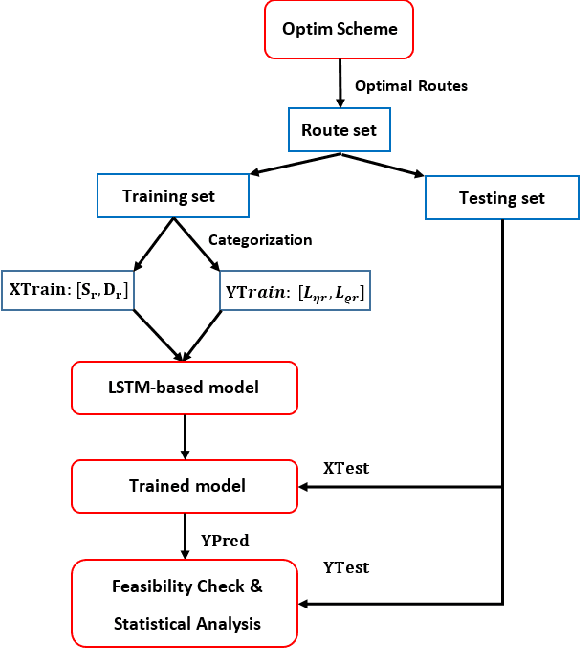Zhaohui Huang
Sub-6GHz Assisted mmWave Hybrid Beamforming with Heterogeneous Graph Neural Network
Apr 26, 2024



Abstract:In next-generation communications, sub-6GHz and millimeter-wave (mmWave) links typically coexist, with the sub-6GHz link always active and the mmWave link active when high-rate transmission is required. Due to the spatial similarities between sub-6GHz and mmWave channels, sub-6GHz channel information can be utilized to support hybrid beamforming in mmWave communications to reduce overhead costs. We consider a multi-cell heterogeneous communication network where both sub-6GHz and mmWave communications co-exist. Multiple mmWave base stations (BSs) in the heterogeneous network simultaneously transmit signals to multiple users in their own mmWave cells while interfering with each other. The challenging problem is to design hybrid beamformers in the mmWave band that can maximize the system spectral efficiency. To address this highly complex programming using sub-6GHz information, a novel heterogeneous graph neural network (HGNN) architecture is proposed to learn the intrinsic relationship between sub-6GHz and mmWave and design the hybrid beamformers for mmWave BSs. The proposed HGNN consists of two different node types, namely, BS nodes and user equipment (UE) nodes, and two different edge types, namely, desired link edge and interfering link edge. In addition, the attention mechanism and the residual structure are utilized in the HGNN architecture to improve the performance. Simulation results show that the proposed HGNN can successfully achieve better performances with sub-6GHz information than traditional learning methods. The results also demonstrate that the attention mechanism and residual structure improve the performances of the HGNN compared to its unmodified counterparts.
MMA-RNN: A Multi-level Multi-task Attention-based Recurrent Neural Network for Discrimination and Localization of Atrial Fibrillation
Feb 09, 2023Abstract:The automatic detection of atrial fibrillation based on electrocardiograph (ECG) signals has received wide attention both clinically and practically. It is challenging to process ECG signals with cyclical pattern, varying length and unstable quality due to noise and distortion. Besides, there has been insufficient research on separating persistent atrial fibrillation from paroxysmal atrial fibrillation, and little discussion on locating the onsets and end points of AF episodes. It is even more arduous to perform well on these two distinct but interrelated tasks, while avoiding the mistakes inherent from stage-by-stage approaches. This paper proposes the Multi-level Multi-task Attention-based Recurrent Neural Network for three-class discrimination on patients and localization of the exact timing of AF episodes. Our model captures three-level sequential features based on a hierarchical architecture utilizing Bidirectional Long and Short-Term Memory Network (Bi-LSTM) and attention layers, and accomplishes the two tasks simultaneously with a multi-head classifier. The model is designed as an end-to-end framework to enhance information interaction and reduce error accumulation. Finally, we conduct experiments on CPSC 2021 dataset and the result demonstrates the superior performance of our method, indicating the potential application of MMA-RNN to wearable mobile devices for routine AF monitoring and early diagnosis.
Enhanced LSTM-based Service Decomposition for Mobile Augmented Reality
Apr 15, 2021



Abstract:Undoubtedly, Mobile Augmented Reality (MAR) applications for 5G and Beyond wireless networks are witnessing a notable attention recently. However, they require significant computational and storage resources at the end device and/or the network via Edge Cloud (EC) support. In this work, a MAR service is considered under the lenses of microservices where MAR service components can be decomposed and anchored at different locations ranging from the end device to different ECs in order to optimize the overall service and network efficiency. To this end, we propose a mobility aware MAR service decomposition using a Long Short Term Memory (LSTM) deep neural network to provide efficient pro-active decision making in real-time. More specifically, the LSTM deep neural network is trained with optimal solutions derived from a mathematical programming formulation in an offline manner. Then, decision making at the inference stage is used to optimize service decomposition of MAR services. A wide set of numerical investigations reveal that the mobility aware LSTM deep neural network manage to outperform recently proposed schemes in terms of both decision making quality as well as computational time.
 Add to Chrome
Add to Chrome Add to Firefox
Add to Firefox Add to Edge
Add to Edge